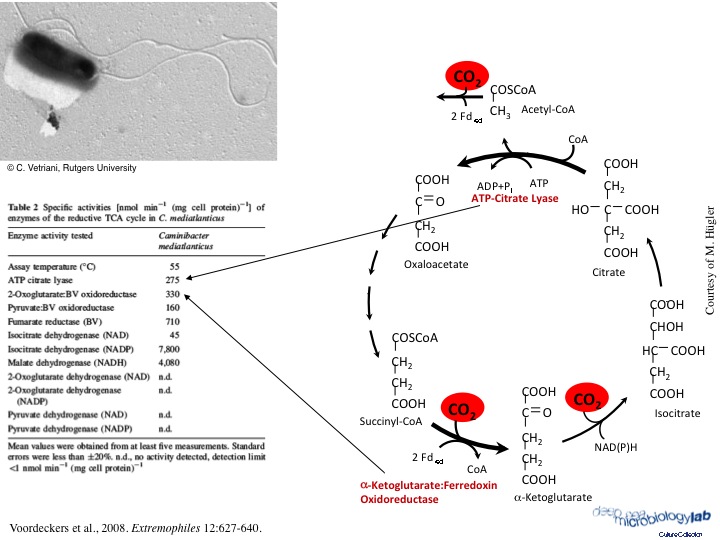Physiology and metabolism of microorganisms that inhabit marine geothermal environments
The Deep-Sea Microbiology Lab culture collection includes over 400 strains isolated from marine geothermal and reducing environments. In particular, pure culture work in my laboratory led to the isolation and characterization of several novel thermophilic, chemolithoautotrophic, anaerobic bacteria representative of the microbial communities that inhabit deep-sea hydrothermal vents in both the Atlantic and Pacific Oceans. These organisms belong to the Aquificae (e.g., Thermovibrio ammonificans and Phorcysia thermohydrogeniphila) and to the Epsilonproteobacteria, (e.g., Caminibacter medialtlanticus, Cetia pacifica and Sulfurovum riftiae), two groups of bacteria that are also well represented in natural chemosynthetic biofilms that colonize deep-sea vents. Physiological studies of these pure cultures revealed that the majority of the vent anaerobic chemolithotrophs conserve energy by coupling the oxidation of hydrogen to the reduction of nitrate or sulfur, with the production of ammonium and hydrogen sulfide, respectively. Read about our discovery of new microorganisms from coastal and deep-sea hydrothermal vents (Cetia pacifica; Phorcysia thermohydrogeniphila; Sulfurovum riftiae; Caminibacter mediatlanticus; Thermovibrio ammonificans; Nautilia nitratireducens; Parvibaculum hydrocarboniclasticum; Salinisphaera hydrothermalis; Varunaivibrio sulfuroxidans; Galenea microaerophila).
The analysis of the genome sequence of these organisms, along with those already available in the database, allowed us to reconstruct their central metabolism, formulate hypotheses and test them experimentally. For instance, after identifying the gene (luxS ) involved in the production of the autoinducer 2 (AI-2) quorum sensing signal in the genomes of vent Epsilonproteobacteria, we have demonstrated that pure cultures of Caminibacter mediatlanticus and Sulfurovum lithotrophicum express the luxS gene and synthesize AI-2 signals during growth. For more information, read our paper in ISME J.



